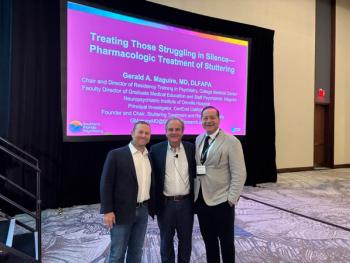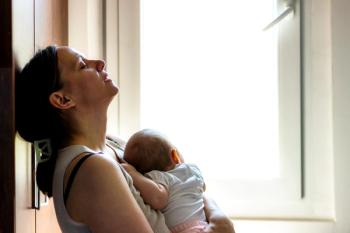
- Vol 40, Issue 2
Treating Acquired Brain Injury With Noninvasive Brain Stimulation
Key Takeaways
- Acquired brain injury (ABI) results in complex changes and increased risk for comorbidities, necessitating intensive rehabilitation.
- Neurorehabilitation promotes plasticity through activity-based neurostimulation, but variability in interventions and adherence to guidelines remain challenges.
"rTMS and tDCS allow for controlled and targeted neuromodulation, and when combined with other therapeutic approaches, they may produce superior outcomes."
An
ABI can result in multiple and complex changes in several domains (
A substantial number of individuals with ABI require intensive rehabilitation to recover. Neurorehabilitation programs affect change in function by promoting plasticity through activity-based neurostimulation.7 Neuronal circuits are modified by experience and learning. Research has shown that experience-dependent learning can change neural circuity at multiple levels of the central nervous system, including synapses, cortical maps, and larger neural networks.8,9
While the effectiveness of neurorehabilitation is well documented, there is wide variability of therapeutic interventions, inconsistencies in frequency and duration of treatment, and poor adherence to published guidelines and best practice recommendations.10 Neuronal modulation and activity is therefore difficult to control and neuronal repair is difficult to measure in individuals receiving activity-based neurorehabilitation.7
Additionally, some treatments for the consequences of ABI—particularly pharmacological treatment for mood disorders, cognitive dysfunction, and motor/movement disorders—can cause adverse effects.11 Noninvasive brain stimulation has been shown to be a safe, effective treatment following ABI, allowing for greater control of neuromodulation with minimal adverse effects.
Two methods of noninvasive brain stimulation, transcranial direct current stimulation (tDCS) and repetitive transcranial magnetic stimulation (
rTMS
rTMS is a neuromodulator tool used to regulate neural activity through the use of rapidly alternating magnetic fields. A magnetic pulse passes through the skull and induces activity in a targeted (ie, focal) cortical region. Pulses can be delivered repetitively to produce long-term changes in neural activity. Cortical excitability can be upregulated through the application of high-frequency stimulation (> 5 Hz), or downregulated with low-frequency stimulation (~ 1 Hz).14
Hummel and colleagues noted that an interhemispheric imbalance in patients with brain injury and noninvasive brain stimulation can reduce the imbalance.15 High-frequency stimulation of an affected hemisphere increases cortical excitability, whereas low-frequency stimulation of an unaffected hemisphere decreases cortical excitability.
rTMS has been shown to be safe and risks of adverse effects are low when established guidelines are followed. Common adverse effects of rTMS include headache and minor scalp irritation following therapy, but these tend to be transient. Though rarely reported in the literature, there is an increased risk for seizure activity in individuals with brain injury, requiring additional monitoring or management via strict criteria for inclusion in treatment.16
tDCS
tDCS is another noninvasive neuromodulator tool that uses low-amplitude direct current, usually 1 to 2 milliamps, to alter cortical excitability. tDCS regulates cortical excitability by altering neuronal resting membrane potentials, increasing the likelihood of depolarization (increasing cortical excitability) or hyperpolarization (decreasing cortical excitability). An anode and cathode electrodes are placed over the head. Anodal tDCS increases underlying cortical excitability, while cathodal tDCS decreases underlying cortical excitability.17
As with rTMS, the administration of tDCS is safe and effective. Adverse effects, such as moderate fatigue, mild headache, nausea, and itching at the area of stimulation, are infrequent and transient. According to Nitsche and colleagues, the risk for seizures is essentially absent for individuals without a history of epilepsy.18
Rehabilitation
Neuromodular techniques such as rTMS and tDCS can be administered as monotherapy, but may produce better clinical outcomes when combined with other therapeutic interventions, such as cognitive rehabilitation, physical therapy, and psychotherapy.19
Zaninotto and colleagues reviewed the literature on the effects of tDCS on recovery following TBI. While results were mixed, the authors reported that in most studies, tDCS improved responsiveness in patients with disorders of consciousness; improved cognitive function, particularly when tDCS was paired with cognitive rehabilitation; and improved motor recovery when paired with physical therapy.
Anodal stimulation and electrode placement were consistent in all studies (ie, left dorsolateral prefrontal cortex). However, large variability was noted in stimulation parameters, the number of tDCS sessions, and pairing with additional therapies. These methodological differences may account for mixed results.
Lee and Kim investigated the use of low-frequency rTMS to treat depression and cognitive deficits in patients with TBI using a randomized, controlled design.13 Participants were randomly assigned to an experimental or control group. Measurements of depressive symptoms and cognitive function were administered before any rTMS interventions and again following the 10 sessions of rTMS.
All participants received neurodevelopmental therapy (NDT) for muscle strengthening and movement reeducation. Following NDT sessions, participants in the experimental group received low-frequency stimulation applied to the right dorsolateral prefrontal cortex once per day, 5 times per week for 2 weeks, weekends excluded.
Participants in the control group received “sham” rTMS; participants were placed in the stimulator chair and the coil was placed over the right dorsolateral prefrontal cortex, but no magnetic pulse was delivered. Compared with controls, participants in the experimental group showed improvement in depressive symptoms (Montgomery-Asberg Depression Rating Scale), and cognitive performance (Trail Making Test and Stroop Color and Word Test).
rTMS has also been used to treat language deficits (improvements noted in naming accuracy, word repetition), visuospatial neglect (improvements noted in line bisection and clock drawing task), and executive functioning in individuals with TBI or stroke.20-22
Concluding Thoughts
Noninvasive brain stimulation techniques such as rTMS and tDCS have been shown to be safe and effective in treating the cognitive, physical, and emotional consequences following acquired brain injury. rTMS and tDCS allow for controlled and targeted neuromodulation, and when combined with other therapeutic approaches—such as physical therapy, occupational therapy, speech/language therapy, and psychotherapy—may produce superior outcomes. Noninvasive brain stimulation techniques may be a suitable alternative to treatments that can cause deleterious adverse effects following ABI.
Dr Seale is the regional director of clinical services at the Centre for Neuro Skills, which operates postacute brain injury rehabilitation programs in California and Texas. He is licensed in Texas as a chemical dependency counselor and psychological associate with independent practice. He also holds a clinical appointment at The University of Texas Medical Branch in Galveston in the Department of Rehabilitation Sciences.
References
1. What is the difference between acquired brain injury and traumatic brain injury? Brain Injury Association of America. Accessed November 10, 2022.
2. Definition. Toronto Acquired Brain Injury Network. March 31, 2005. Accessed November 10, 2022.
3. Centers for Disease Control and Prevention. Report to Congress on traumatic brain injury in the United States: epidemiology and rehabilitation. Reviewed January 22, 2016. Accessed November 10, 2022.
4. Stroke. Centers for Disease Control and Prevention. Reviewed September 1, 2022. Accessed November 10, 2022.
5. Greenwald BD, Burnett DM, Miller MA.
6. Masel BE, DeWitt DS.
7. Roger J, Sherrard RM.
8. Kimberley TJ, Samargia S, Moore LG, et al.
9. Kelly C, Foxe JJ & Garavan H.
10. Teasell R, Bayona N, Marshall S, et al.
11. Fann JR, Hart T, Schomer KG.
12. Lee SA, Kim MK.
13. Kim WS, Lee K, Kim S, et al.
14. Ross S, Hallett M, Rossini PM, Pascual-Leone A; Safety of TMS Consensus Group.
15. Hummel FC, Cohen LG.
16. Kletzel SL, Aaronson AL, Guernon A, et al.
17. Nitsche MA, Liebetanz D, Lang N, et al.
18. Nitsche MA, Cohen LG, Wassermann EM, et al.
19. Zaninotto AL, El-Hagrassy MM, Green JR, et al.
20. Barwood CH, Murdoch BE, Whelan BM, et al.
21. Lim JY, Kang EK, Paik NJ.
22. Hara T, Abo M, Sasaki N, et al.
Articles in this issue
almost 3 years ago
Eating Disorders Among Older Adultsalmost 3 years ago
Addressing Unmet Needs and Clinical Challenges in MDDalmost 3 years ago
The Psychiatrist’s Role in Caring for Adolescents With Eating Disordersalmost 3 years ago
Bulimia Nervosa: Diagnostic Clarification and Determining Levels of Carealmost 3 years ago
The Status of Neuromodulation Trials in Eating Disordersalmost 3 years ago
The Fight for Psychiatric Rights and Accountabilityalmost 3 years ago
Lawmakers Support CMS Rules to Streamline Prior Authorizationsalmost 3 years ago
"What a Psychiatrist Remembers"almost 3 years ago
Research Explores the Efficacy of Clozapine as a Treatment for Catatoniaalmost 3 years ago
The Overdose ConundrumNewsletter
Receive trusted psychiatric news, expert analysis, and clinical insights — subscribe today to support your practice and your patients.













